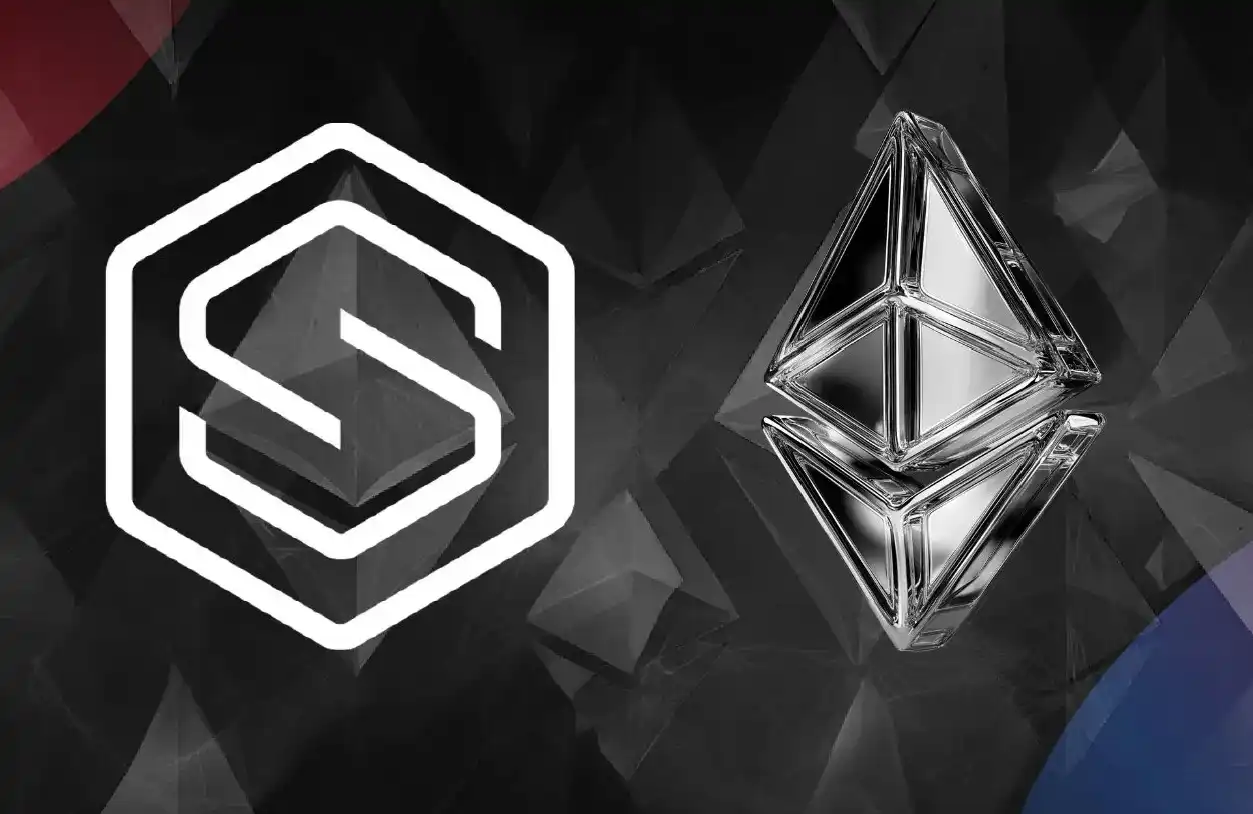Detailed explanation of Pocket Network: Web3 infrastructure
Original title: "Web3 Infrastructure - Pocket Network"
Original author: Beam, H.Forest Ventures
" 2022 At EthDenver in 2019, protocol expert Daniel Olshansky gave a presentation on Pocket network, and they distributed multiple prizes to the best projects integrating with Pocket to support the development of the ecosystem. ”
Pocket network establishes an incentive mechanism among all blockchain participants (application developers and full node operators), and provides access to blockchain data through a decentralized node structure Access, belonging to the web3 infrastructure track. In simple terms, the Pocket network's mission is to provide web3 applications with reliable, blockchain-agnostic, decentralized API access at a fraction of the cost of centralized competitors such as Infura.
Before understanding what Pocket network does, you need to understand the relevant knowledge of web3 application development. If you are a developer, before running your protocol perfectly, for example, you deploy a lending protocol on the public chain, and users come to interact with your protocol, you need data from the public chain, which is usually API Operated in the form of a session request. At present, blockchain developers generally use centralized blockchain infrastructure like Infura to call and return data on the public chain.
But there is actually a hidden danger. These web3 API providers spend quite a lot on purchasing data centers, building their own servers and investing in hardware research, so most of them web3 API providers usually run on existing web2 platforms (eg AWS, Amazon Cloud). In other words, in our top-to-bottom decentralized architecture, a key link appears to be centralized.
Pocket network can solve this problem. It is a value exchange platform built around the supply and demand of nodes. Its ecological participants are divided into:
Node suppliers, they can pledge POKT to join the agreement and provide node operation services;
The demand side of the node, that is, the developers of various Dapps, they also need to pledge POKT to obtain node services.
This article will analyze the project in terms of relevant track prospects, business development, project economic model, team and financing background, etc., and it is only for industry communication , not as investment advice.
01 Summary
Project highlights
< /p>
The track has broad prospects and strong certainty
Pocket network is a decentralized The API data service agreement belongs to the web3 infrastructure track. We are optimistic about the related track mainly based on the following logic:
The future must belong to multi-chain, and the ecological explosion on the chain At present, other public chains except Ethereum often have security incidents due to insufficient decentralization of node operations, such as the SOL downtime in September 2021.
For most Dapp development teams, the cost of renting and maintaining their own nodes is too high, and they will prefer to choose node hosting operators such as Infura, but Infura as Centralized opaque operating organizations have higher risks of anti-censorship and privacy protection; for example, on March 4th, Metamask blocked user IPs due to configuration errors of Infura nodes.
In the node operator track, a leading project (Infura/Alchemy) with a large market share has been produced. For small and medium-sized operators, it may be one of the options in the future to jointly fight against large operators under the agreement.
So from the perspective of the decentralization requirements of public chain operations, the security requirements of Dapp deployment and operation, and the market strategies of small and medium-sized node operators, Pocket is located in Subdividing the track has great certainty and has great market prospects.
The business has developed very rapidly after the launch
According to the follow-up and observation of Pocket official website and Dashboard, we found that Pocket currently has more than 30,000 nodes (600 at the beginning of 21), processing more than 200 million relays per day (3 million/day at the beginning of 21), and supports More than 20 public chain networks (mainly Harmony).
Economic model upgrade brings stronger deflation
According to the official white paper, the current project adopts such an economic model out of the consideration of the rapid development of the project at the initial stage. From a penetrating perspective, it is equivalent to issuing coins Subsidize the demand side and the supply side, developers obtain services at a lower price, and node suppliers receive POKT output as a cost subsidy. When the market develops to a mature stage, the team considers adopting the method of pay via burn, that is, part of the POKT pledged by developers will be destroyed, and greater deflation will be exchanged for better value.
Project risk
The project is benchmarked against AWS or Infura, which is essentially a group of small and medium-sized The process in which operators redistribute value in the same agreement: the agreement acts as a whole against centralized operators. Therefore, under the current economic model, the essence of the token of the agreement is: a two-way subsidy between node operators (miners) and Dapp developers (node users), which will cause problems as follows:
First, the market expansion is not as expected, leading to insufficient pledge, inflation higher than expected, and excessive selling pressure, so it is necessary to observe the cooperation between its ecological expansion and public chain for a long time;
The node operators in the Pocket network are too centralized, the decentralization narrative is lost, and the token value decreases.
02 Business Brief
Basic Architecture
The core business of Pocket network is to provide developers with decentralized data relay services. Its network consists of 3 components: application program, node and network layer.
Where an application submits a relay or API request. Nodes do this by submitting these requests to the corresponding public database and returning relevant data to the application. The network layer consists of protocols and deterministic storage, which are the backbone of interactions between applications and nodes, including (but not limited to) configuration, record tracking, governance, and economic policy. The mechanism used by the network to regulate the interaction between applications and nodes is the session (Session).
Business object
Therefore, the business object of Pocket network is usually public chain and Dapp development By.
Some public chains can choose to access the Pocket network due to their early development stage, insufficient dispersion of node operators, fewer ecological participants, and insufficient degree of decentralization Network, such as October 2021, Pocket network will integrate public chains such as Harmony and Solana. Another type of business object is the developers of various decentralized applications. For developers, they can choose to build their own nodes. This has the advantage of higher security, but the price is high, so most developers will choose something like As API service providers such as Infura and Alchemy, while reducing costs, they need to bear risks such as censorship, privacy disclosure, and single-point downtime. Pocket network provides developers with a third solution. In a decentralized way, it enhances the stability of the system and avoids the risk of network service interruption caused by a single node downtime. At the same time, due to its full-node operator topology The flexibility brought by diversity reduces the cost of use.
Business Development
The track where the project is located is mainly against Infura or Alchemy, according to the first two According to the situation announced by the author, its daily data requests are usually at the level of 100 billion, and the valuation is about 3 billion US dollars. However, Pocket’s daily data requests are currently stable at around 200 million, which only accounts for a very small part of the relevant market. Currently, Pocket is fully diluted. The valuation is about 700 million.
However, mechanically comparing the decentralized service provision agreement with the centralized node operating company is tantamount to seeking a sword. The exploration of decentralization is a long-term process. The decentralization of applications spawned by Ethereum smart contracts, decentralized storage represented by AR, etc., decentralized content distribution represented by Theta, etc., and HNT, etc. Decentralized network infrastructure construction represented by Pocket, the decentralization of data infrastructure is a weak link in the entire infrastructure construction, and Pocket can be said to fill the gap in this field.
03 Token Model
The initial circulation of Pokt is 650 million pieces, and the total amount is no Upper limit, according to the official website, the distribution and release of the initial 650 million tokens are as follows:
Inflation
Pocket network will mint 0.01 Pokt every time it processes and verifies a relay data request, 89% of which will be rewarded to the verification node that correctly processed the data request, 10% will be allocated to the Pocket foundation, and the remaining 1% Awarded to validators who package blocks in the Pocket network.
The DAO of Pocket network will adjust the output speed of Pokt according to the situation to balance the inflation of Pokt. Adam, a core member of the team, initiated a parameter adjustment proposal (PUP-11) in community governance, called the WAGMI parameter. Considering that the number of relays has increased significantly recently, and the output of Pokt has reached 2-3 million per day, he suggested Consider this pace of inflation carefully. On February 8, its governance community Pocket DAO released the governance proposal PUP-13. The content of the proposal is to gradually reduce the inflation rate of POKT by reducing the node reward POKT. The proposal has been approved, and the inflation rate is adjusted as follows:
< p>After the proposal is passed: target inflation rate = 84.85 POKT/day
+30 days: target inflation rate = 76.36 POKT/day
+60 days: target inflation rate = 67.88 POKT/day
+ 90 days: target inflation rate = 59.39 POKT/day
+120 days: target inflation rate = 50.91 POKT/day
+150 days: target inflation rate = 42.42 POKT/day (or 15,486 POKT/year)
Deflation
Requirers of data relay services and providers of data relay services need Pokt to participate in the network.
For developers, in order to obtain system services, they need to pledge at least 1 Pokt to obtain data relay services. The relay service is used about ten times in the session cycle. For node operators, the minimum stake required to become a service node capable of handling relay requests is 15,000 Pokt.
According to the official website plan, when the entire system passes the early growth phase (growth phase) and enters the system’s mature phase (mature phase), in order to ensure the Balance, DAO will start the application destruction mechanism, that is, when the application uses the relay service, it will destroy its pledged Pokt at a certain rate. At this time, the application payment model will gradually shift to the SaaS model, that is, according to the actual business usage TOLL.
04 Financing Status
Pocket Network has conducted multiple rounds of financing, according to official sources, in In April 2021, it raised USD 9.3 million. In addition to Blockchain.com, Eden Block, DACM, LD, OKEX, FBG and other institutions, the investors are more than 200 node operators.
In January 2022, according to the official, $10 million in strategic financing was completed, led by Republic Capital, RockTree Capital, Arrington Capital, C² Ventures, Coinshares, Decentral Park Capital, Dominance Ventures and others participated in the investment.
Original link
Welcome to join the official BlockBeats community:
Telegram Subscription Group: https://t.me/theblockbeats
Telegram Discussion Group: https://t.me/BlockBeats_App
Official Twitter Account: https://twitter.com/BlockBeatsAsia
 Forum
Forum OPRR
OPRR Finance
Finance
 Specials
Specials
 On-chain Eco
On-chain Eco
 Entry
Entry
 Podcasts
Podcasts
 Activities
Activities








